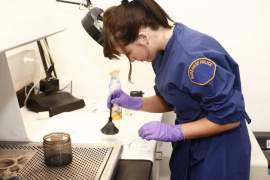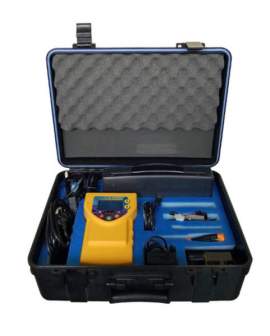
Crime Scene Investigation Explained

Crime Scene Investigation Explained:
A crime scene investigation is the meeting point of law, logic and science. Evaluating and processing a crime scene investigation is a tedious process, that involves the fulfillment or documentation and exhaustive recording; every detail and the attached evidence located at a crime scene must be recorded and evaluated to accurately elucidate upon the facts regarding the underlying incident.
The evidence gathered from a crime scene investigation is observed, documented then gathered. Once the evidence is obtained it is bagged and transferred to a laboratory where further tests and examinations will be administered. After a team of forensic scientists evaluate the evidence it may deemed permissible in court; if permitted by the judge, the evidence obtained from the crime scene will act as a foundation for the prosecution of the suspect.
At any given crime scene, a crime scene investigation may collected all sorts of evidence, such as dried blood, strands of hair, fingerprints, lint or clothing. Regardless of the type of evidence obtained, all observations and the collection of evidence must meet strict protocol. This process is implemented during a crime scene investigation to ensure that the evidence is left as is; any tampering of evidence may result in a mistrial or inconclusive results.
The ultimate goal of a crime scene investigation is to convict the alleged perpetrator of the underlying crime. As a result of this goal, it is essential for those involved in the investigation process to preserve the evidence collected. All evidence obtained from a crime scene investigation must be left natural, meaning he cannot be disturbed or compromised in anyway. For instance, if fingerprints are collected from a window pane at the scene of the crime, they cannot be smudged or mixed in with another set of prints.
Crime Scene Investigation Process:
A crime scene investigation will commence when the underlying law enforcement unit receives a call from the police officers or detectives who were first called to the scene. The crime scene investigation unit will then arrive on the scene and subsequently secure it to prevent pedestrians or citizens from tampering with the evidence. The crime scene investigation unit will conduct an initial walk-through to get a feel for the scene. At this point the individuals will find out if anyone moved anything before they arrived and then create an initial theory based on visual examination.
The crime scene investigation team will then document the scene by taking photographs and drawing sketches during a second walk-through. Following this stage, the crime scene investigation can collect all potential evidence, tag it, log it and package it so it remains pure while on its way to the lab. The laboratory will possess all of the evidence gathered by the crime scene investigation unit.
Every crime scene investigation unit will handle the divide between field work and lab work differently. The process of evaluating and gathering evidence at a crime scene is the crime scene investigation, while the laboratory work is known as forensic science.



















